Lockheed’s XF-90 Prototypes Were Underpowered and Overbuilt, But They Sure Were Easy On The Eyes
Almost immediately after the end of World War II, the United States Army Air Force (USAAF) requested a long-range jet-powered penetration/bomber escort. Lockheed’s designers, including the famous Kelly Johnson and his Skunk Works team, submitted their XF-90 design. As with almost every jet-powered aircraft of that time, the XF-90 was to be powered by an engine that either didn’t live up to its potential or didn’t even exist yet (in this case, two of them)- the Lockheed L-1000 (J37) axial flow turbojet engine.
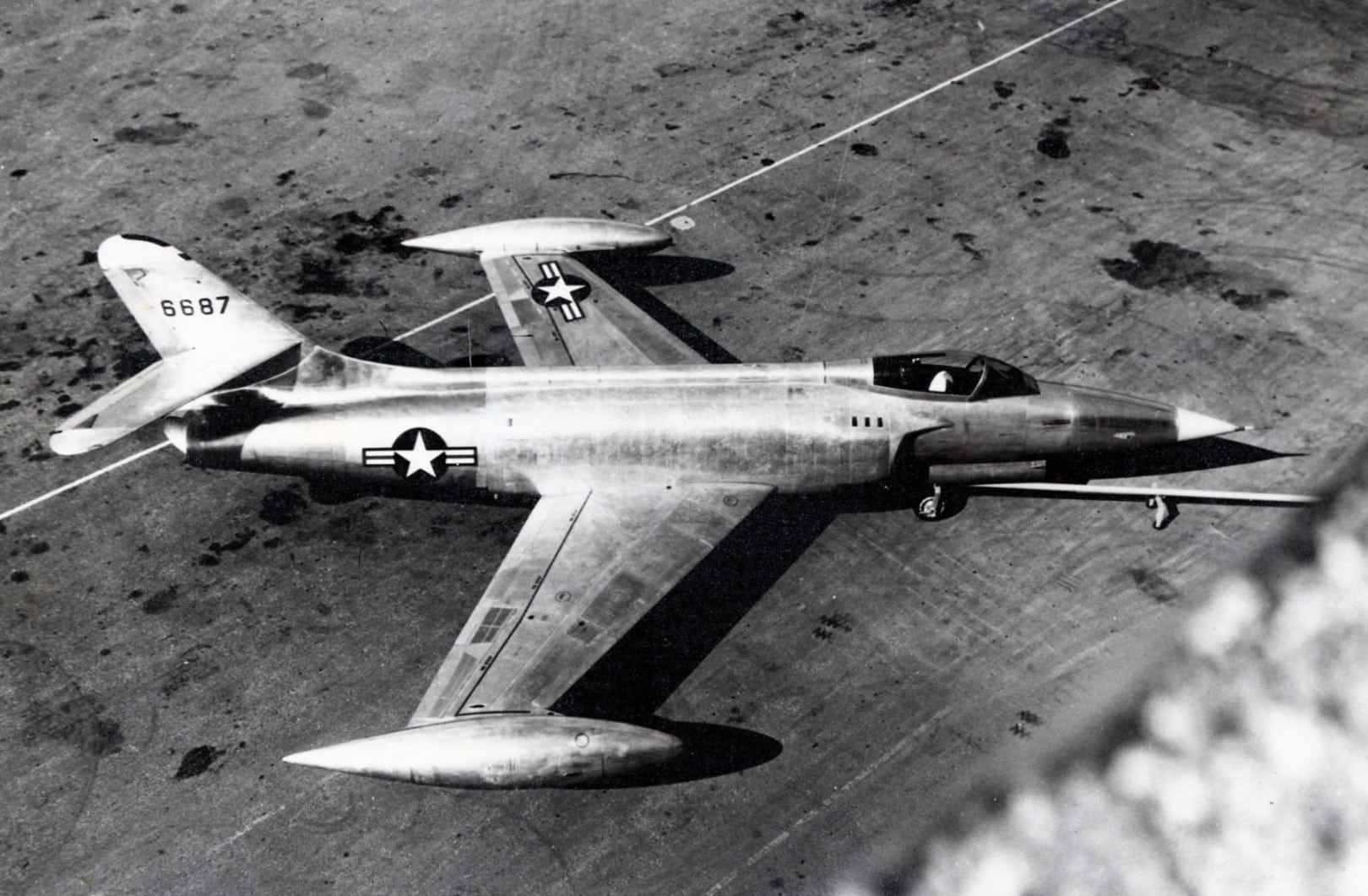
Yet Another Design Let Down by Engine Tech
Unfortunately for Lockheed and for the XF-90, the L-1000 never got off the ground. General Electric J35 engines were to be used initially instead but Westinghouse J34s powered the prototypes. The XP-90 was an aesthetically pleasing design that featured a pair of 35-degree swept wings with leading-edge slats, a swept empennage, a pointed nose, a bubble canopy over a pressurized cockpit with an ejector seat, and tricycle landing gear.
The jet also had a variable-position vertical stabilizer capable of moving forward and aft. In fact, one could look at Lockheed’s P-80 Shooting Star and see design influences, especially the engine intakes, low-mounted wings, and tail geometry.
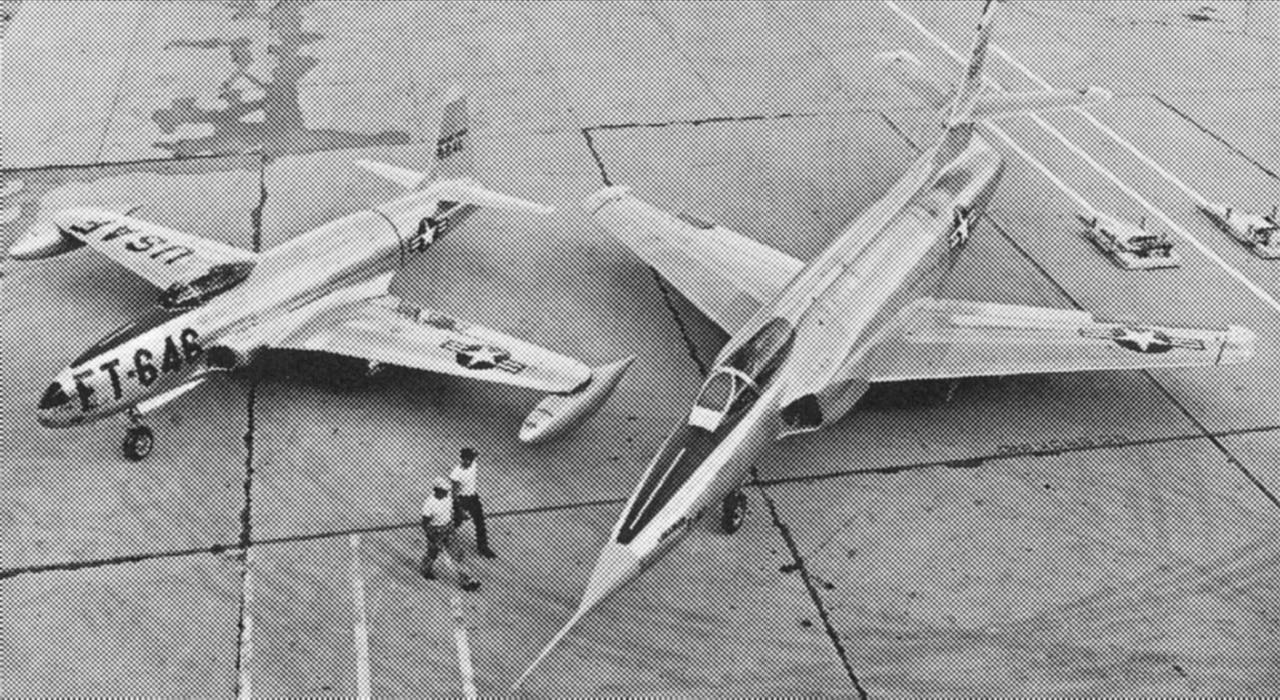
Extra Strength Just in Case
Lockheed built only two XF-90 prototypes (46-687 and 46-688), having been awarded a contract by the Army Air Force to build them in June of 1946. At first, a delta wing was considered for the jet, but swept wings were deemed a better solution and incorporated into the revised design. Because sustained supersonic flight was still mysterious and it was believed might result in unpredictable airframe stresses at the time, Johnson and the Skunk Works engineers built extra strength into the XF-90 airframes.

Built Like a Tank
In fact, the aircraft were built like tanks, with higher-strength 7075 aluminum alloy used for the majority of the structure rather than the 2024 alloy that was commonly used in aircraft structures. Throw in a large number of forgings and machined parts used to construct the jets, and the end result was a pair of gorgeous and shapely fighters that tipped the scales at just over 50% more than either of the competitors- North American’s F-86 Sabre-derived YF-93 and McDonnell’s XP-88A Voodoo. Lockheed’s chief test pilot, Tony LeVier, flew the redesignated XF-90 for the first time on 3 June 1949.

A Little Help From RATO Required
In order to carry enough fuel to meet the range requirement, the XF-90s would utilize wingtip fuel tanks. The two engines were mounted side by side in the rear fuselage. Once it became obvious the L-1000 was a non-starter, XF-90 687 employed non-afterburning J34-WE-11 engines. However, even two of these engines couldn’t push out enough thrust to get 687 off the ground! Rocket-assisted takeoff (RATO) was required for many of the initial test flights unless the aircraft was flown with a reduced fuel load.
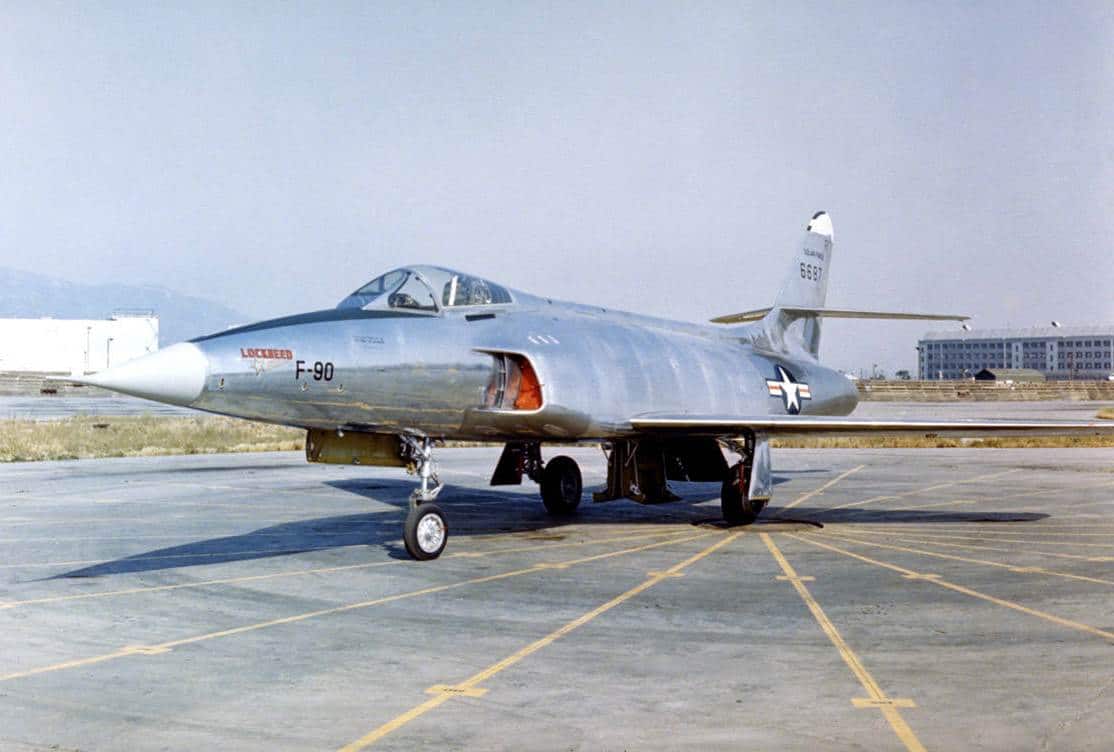
Finally a Propulsion Solution
688’s engines were augmented by afterburners (J34-WE-15 in this configuration), but even with reheat, the jet was and always would be underpowered. Designed to mount six 20 millimeter cannon internally, the XF-90 was legitimately fast even when underpowered. XF-90A 688 was the first United States Air Force (USAF) jet-powered aircraft with an afterburner. It was also the first Lockheed aircraft to fly faster than the speed of sound and did so some 15 times during testing, although never in level flight.
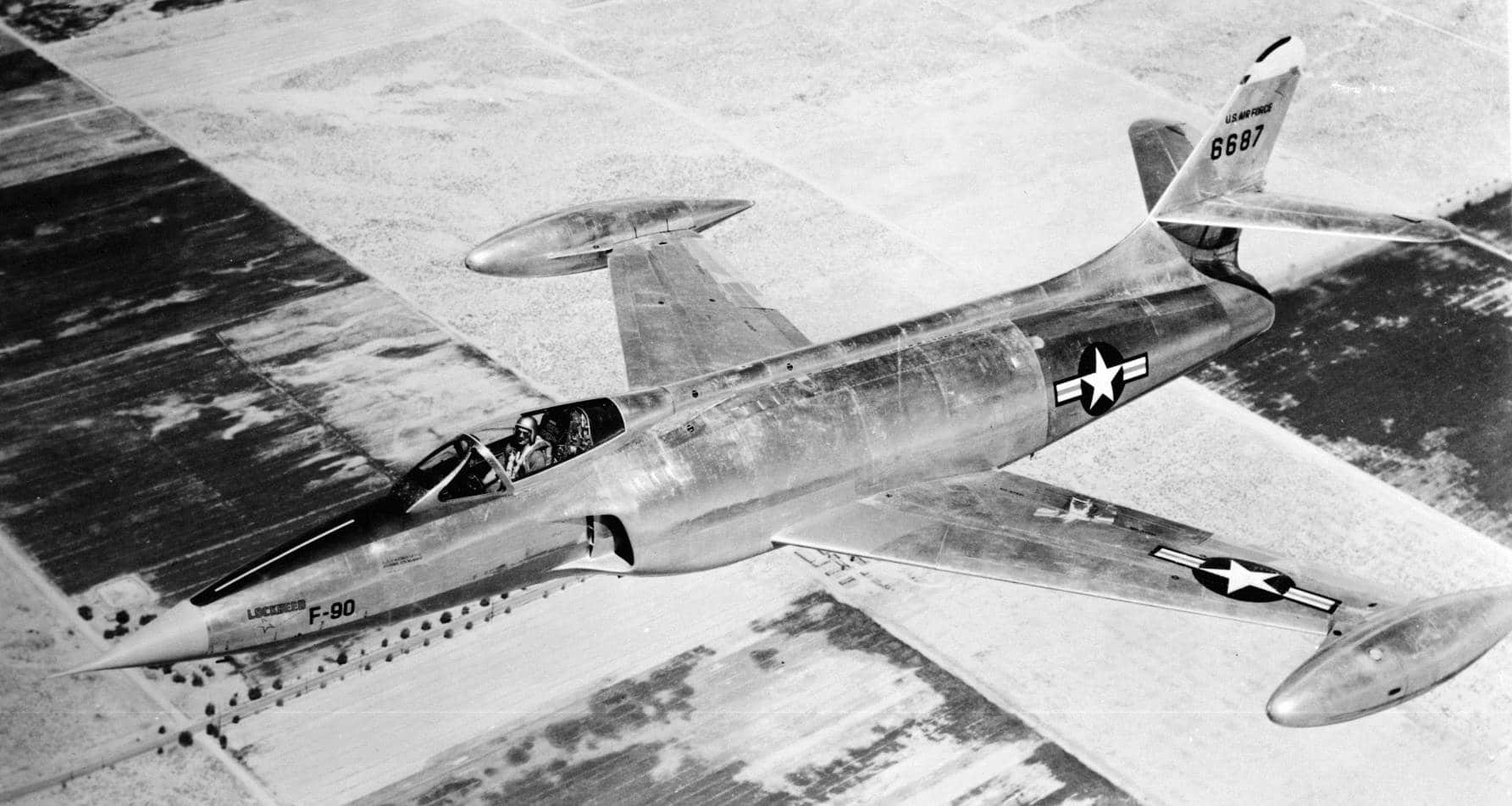
Losing Out to the Voodoo Prototype and In the Blast Zone
On 15 August 1950, the Air Force announced that McDonnell’s XF-88A Voodoo won the competition. The two XF-90 prototypes were never even given Star– names like the other Lockheed jets of the time.
687 ended up at the NACA laboratory in Cleveland, where its stout structure was subjected to a battery of beatings and batterings until all that was left were small bits and pieces. 688 became a test article and was deposited in the blast zones of at least three atomic bomb detonations at the Nevada Test Site.
When even abuse via atomic bomb didn’t destroy the airframe, it ended up at the National Museum of the USAF in Dayton, where its decontaminated fuselage is stored, perhaps one day to be displayed as an exhibit.
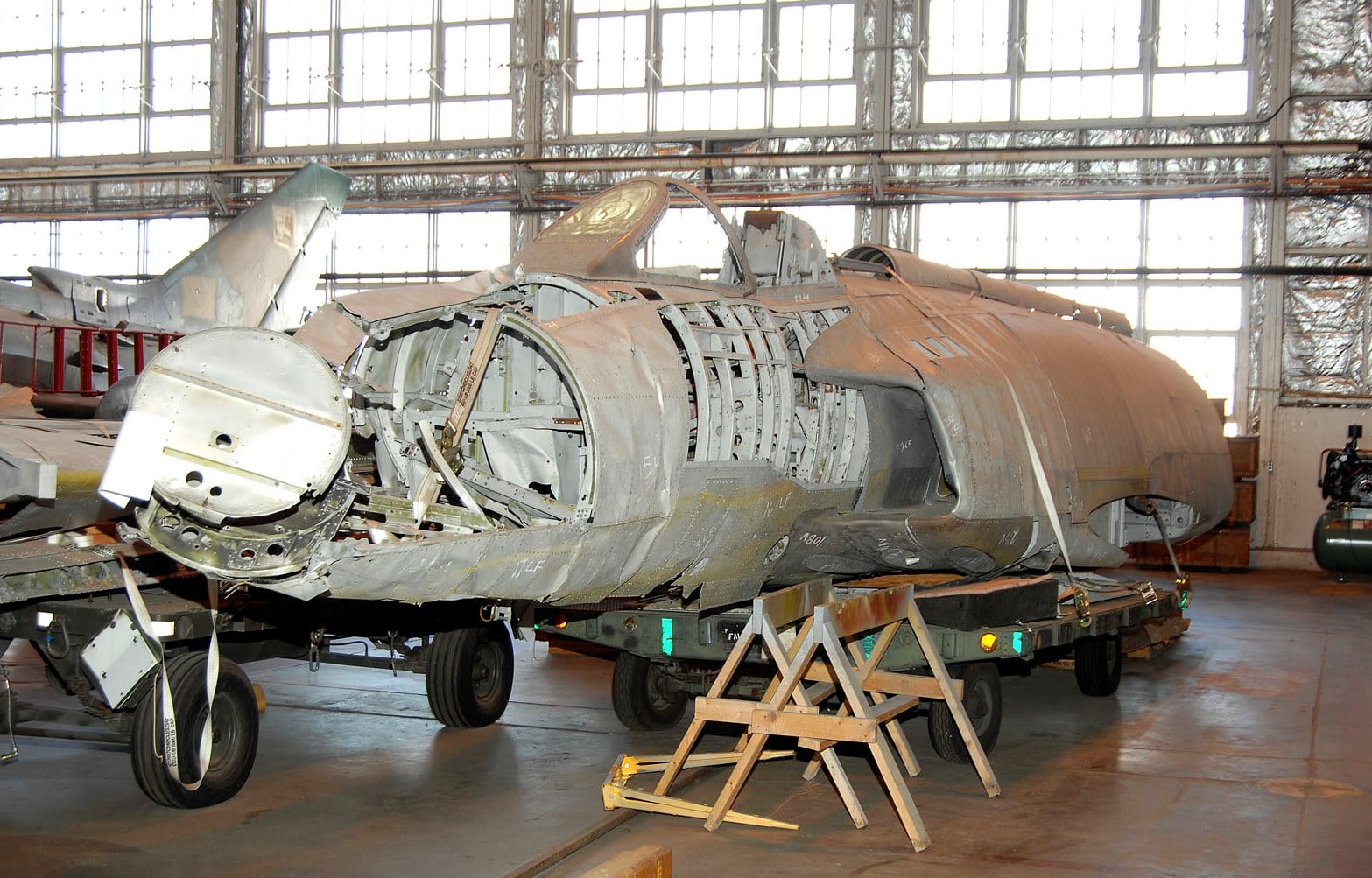
The Usual Lament of the Times
So, primarily for want of more powerful jet engines, the XF-90 was relegated to the trivia section. The aircraft weighed more than a Douglas C-47 airlifter and was stress-rated for 12 Gs. If only turbojet engines had been slightly more advanced…well, if indeed. Lockheed continued to build F-80 fighters and T-33 trainers, Shooting Stars, and went on to build the F-94 Starfire interceptor and later the F-104 Starfighter, among other iconic designs. And the Voodoo? The Air Force bought more Republic F-84 Thunderjets instead of F-88 Voodoos. McDonnell’s Voodoo ended up being shelved for a few years and was reincarnated as the redesigned F-101 Voodoo.
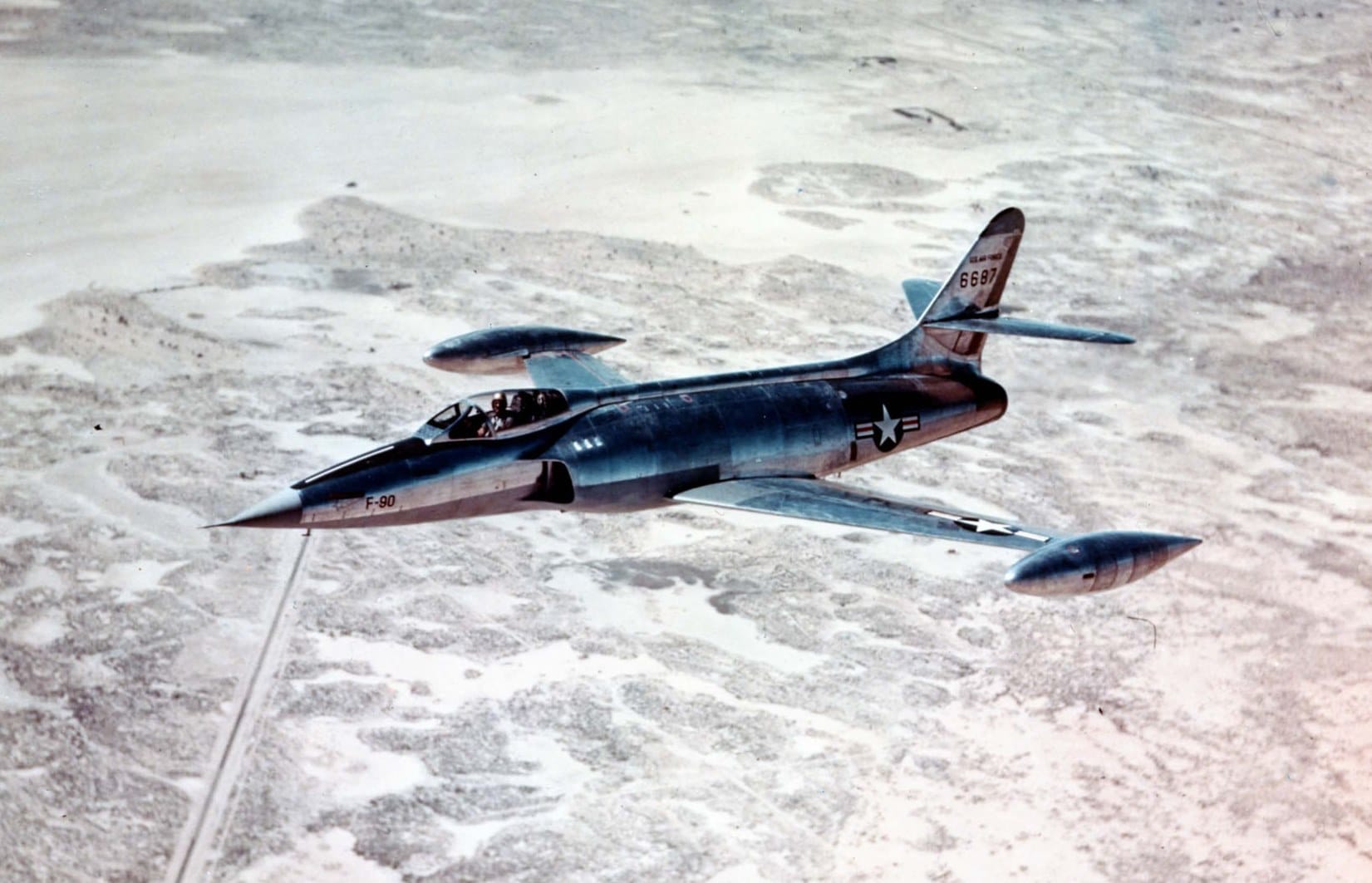

The XP-90 was the basic design for the aircraft of choice in a comic book series “Blackhawk.”